Sixty-seven percent of college students polled at major universities who were familiar with their school’s diversity office said those offices either have no impact or a negative impact on their experience, an exclusive poll conducted for the Daily Caller by the College Pulse reveals.
Of the 3001 college students surveyed, 19 percent report they are aware of a diversity administrator and believe this administrator has positively impacted their college experience. 98 percent of the top 200 universities in America employ a diversity officer.
These universities are now spending hundreds of millions of dollars on diversity, as college tuitions rise steadily.
No employees were dedicated to diversity in 2003 at the University of Michigan, for example. Now, 93 people are employed by Michigan’s Office of Diversity, Equity & Inclusion, receiving a combined $10.6 million in annual salaries, according to AEI scholar and Professor of Economics and Finance at the University of Michigan Mark Perry. In 2016, the University of Michigan announced an $85 million investment to transform diversity culture on campus, including a $10 million multicultural student center, a new program to help freshmen navigate cultural differences, and outreach programs to recruit more diverse students, faculty, and staff.

University of Michigan students do an exercise as part of the 2018 Diversity, Equity & Inclusion Summit at the University of Michigan. (Youtube/University of Michigan)
The University of Michigan is not unique in its diversity spending. Columbia University has dedicated $185 million to diversity funds since 2005 and American University plans to spend $61 million on diversity in 2019 alone.
In the College Pulse survey, 60 percent of the 3001 students surveyed, who attend a variety of four-year colleges and universities representative of the nation, were aware of the existence of a diversity office or administrator at their school. Thirty-five percent were not sure whether a diversity office or administrator existed, while five percent believed this did not exist at their school.
98 percent of the top 200 universities (as determined by US News and World Report) have an office, center, or administrator dedicated to diversity, equity or inclusion, according to analysis by the Daily Caller. The 2 percent of colleges that do not have a diversity office include Howard University, a historically black college, and Bringham Young University, which only offers “Diversity, Multicultural Student Services.”
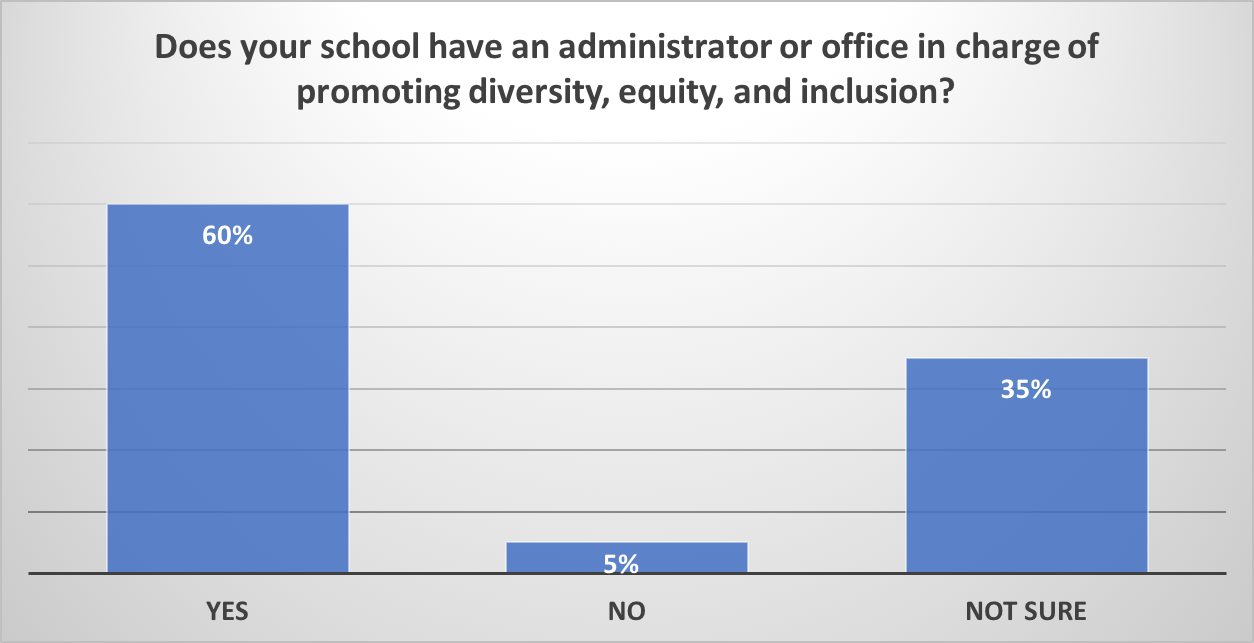
60 percent of students responded that they were aware of such an office or administrator at their college or university. (Data by the College Pulse provided to the Daily Caller)
81 percent of college students are not aware of a diversity office or administrator that has positively impacted their college experience, while 19 percent of college students surveyed reported that diversity administrators positively impacted their college experience.
Of the college students who are aware of diversity administrators or offices at their school, the majority (55%) believe their university’s diversity efforts have had no impact on their college experience. 32 percent of students aware of a diversity office believe their university’s diversity initiatives have made a positive impact on their college experience. 12 percent of college students who are aware of their college’s diversity efforts say those efforts have made their college experience worse.
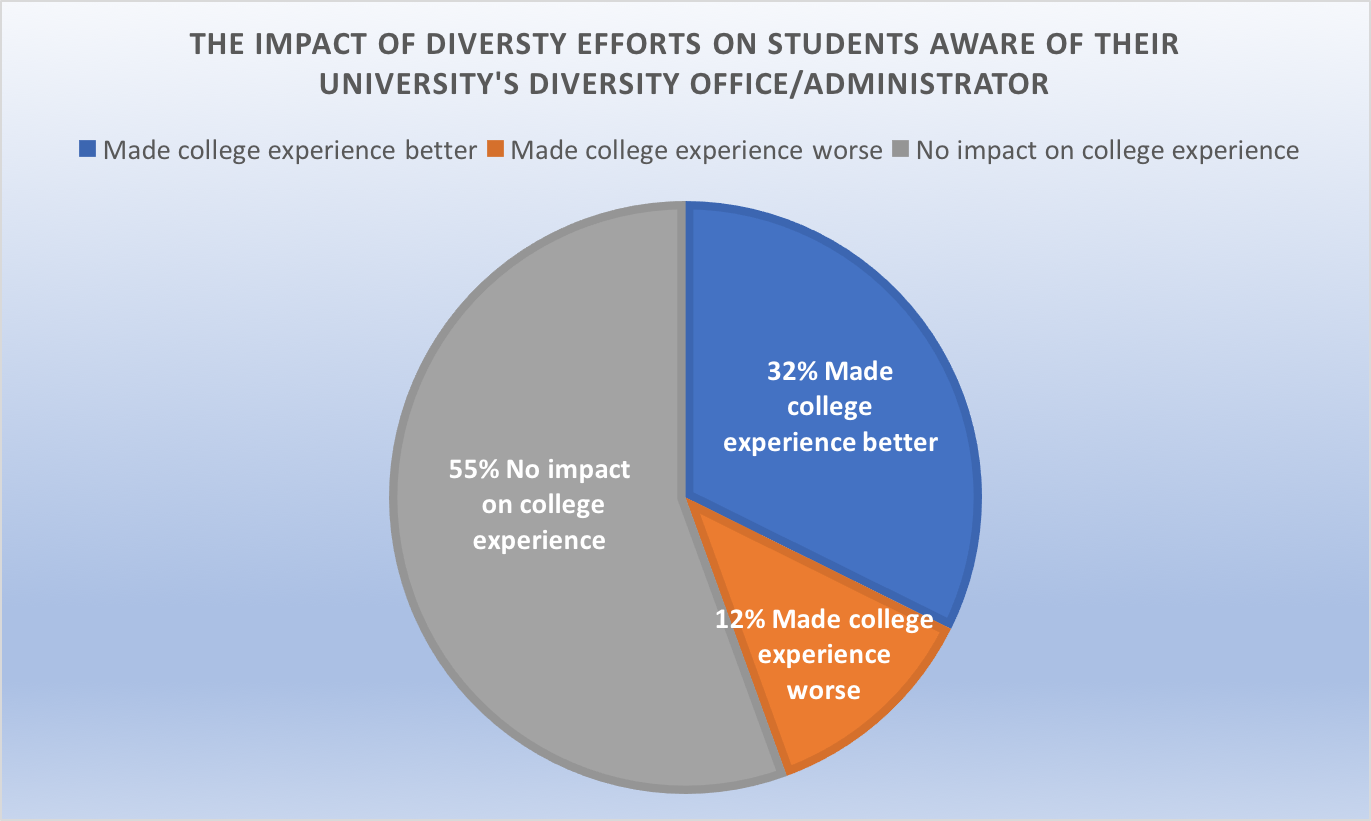
32 percent of college students aware of a diversity office at their school said that their college’s diversity efforts have made their college experience better. (Data by the College Pulse provided to the Daily Caller)
The University of Michigan Office of Diversity, Equity & Inclusion pays 28 diversity officers a salary of more than $100,000 each. The Chief Diversity Officer, Robert Sellers, takes in a salary of roughly $407,000, according to Perry. A network of employees under Sellers hold positions such as “Director, Academic Multicultural Initiatives,” “Assistant Vice Provost for Equity, Inclusion, & Academic Affairs,” and “Program Manager of Campus and Community Relations.”
This huge diversity administration has not come without objections to its size and scope. Perry is outspoken against “administrative bloat” at his university, particularly in the area of diversity. Perry has pointed to Department of Education data which demonstrates that between 1976 and 2011, the number of full-time college administrators increased by 139 percent, while the number of full-time faculty increased by only 76 percent.
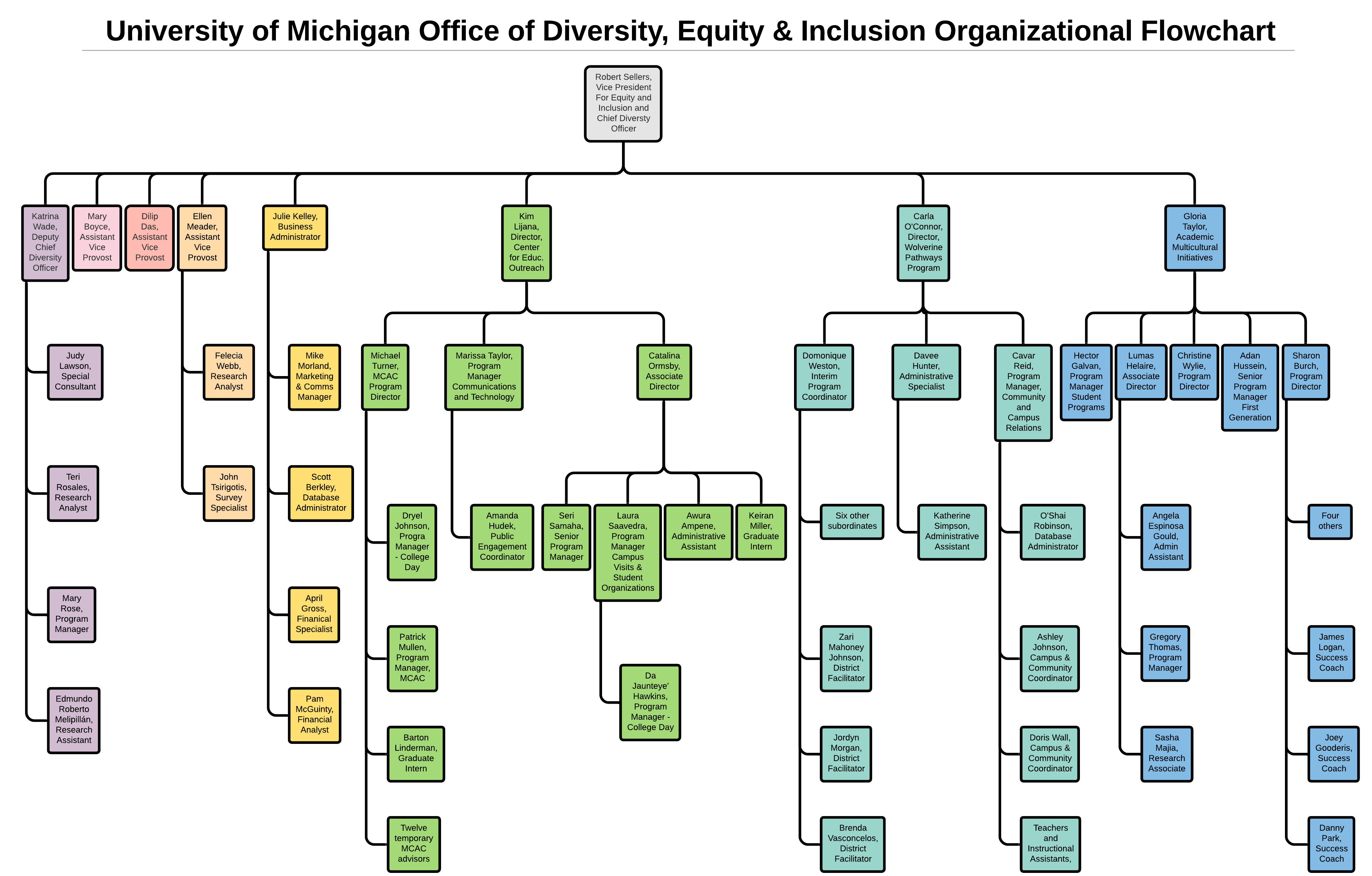
This is the organizational flowchart of the University of Michigan Office of Diversity, Equity & Inclusion. Not all 93 employees are included. (Daily Caller)
In a January editorial criticizing the high cost of spending on diversity at Michigan, the Detroit News said, “It is a fine goal to make campuses more diverse and inclusive. But beefing up the college bureaucracy is not the best way to get there.”
The University of Michigan Office of Diversity, Equity, and Inclusion responded to this editorial by arguing in an op-ed in the Detroit News they provide a crucial service to the University. “Our work on diversity, equity and inclusion is motivated by our belief that diversity and academic excellence are inseparable. They cannot exist without each other,” the diversity office said.
The University explained that some employees with “diversity” in their job descriptions added these specific duties to jobs they already had.
“Data indicates that more diverse perspectives lead to better problem solving and more creative, successful solutions,” said Robert Sellers, Chief Diversity Officer of the University of Michigan, at a lecture in May. “Much of the knowledge we gain and breakthroughs we have result from individuals looking at a problem slightly differently as a function of their backgrounds,” he added.
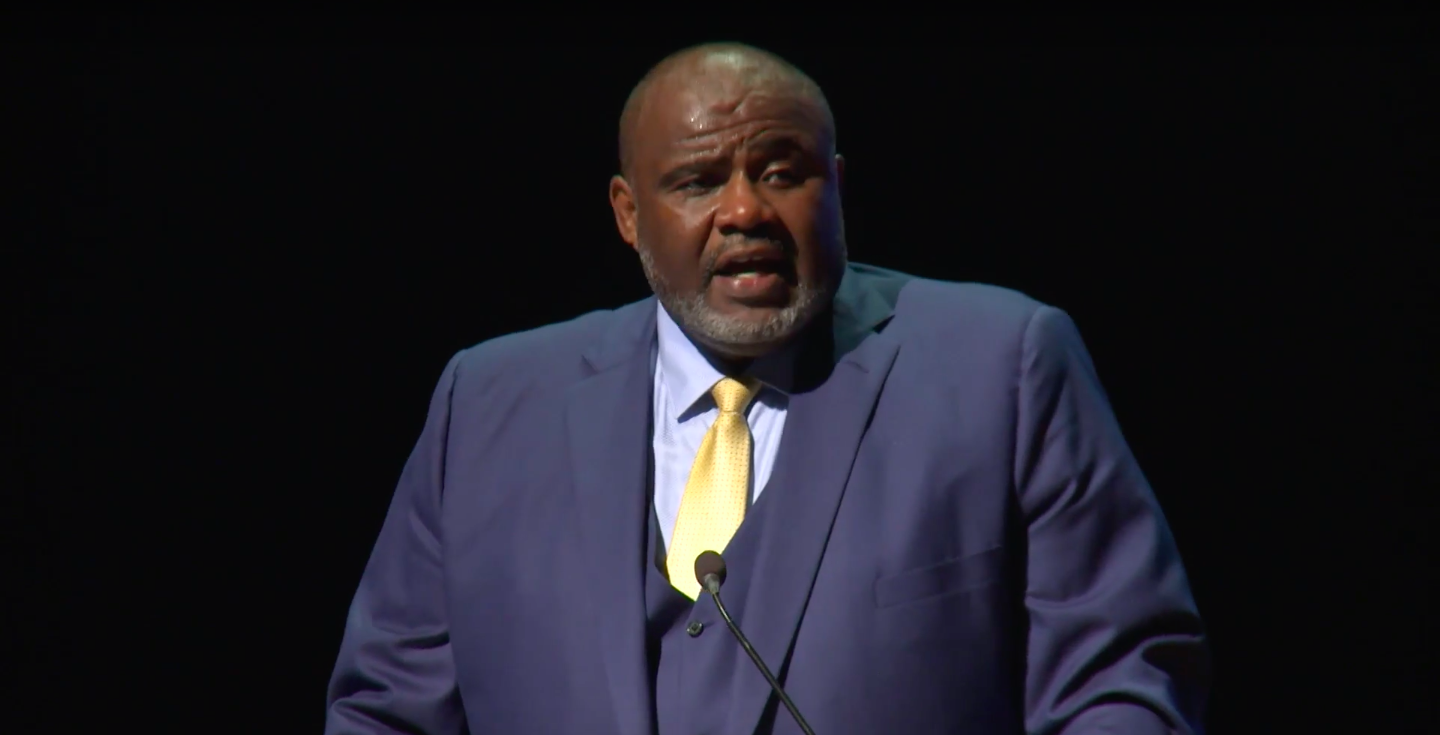
Chief Diversity Officer Robert Sellers speaks at the 2018 Diversity, Equity & Inclusion Summit at the University of Michigan. (Youtube/University of Michigan)
In the past five years, the percentage of minority students entering the fall freshman class at the University of Michigan has increased 35 percent. Affirmative action is illegal in the state of Michigan, so the Office of Diversity, Equity & Inclusion has brought about this transformation through programs that reach out to minority students, they told the Daily Caller.
For example, the University reaches out to minority students by offering scholarships to low-income students and hosting a number of high school programs aimed at potential minority students. Through these means, minority enrollment has grown from 28.3 percent in 2013 to 38.2 percent in 2018.
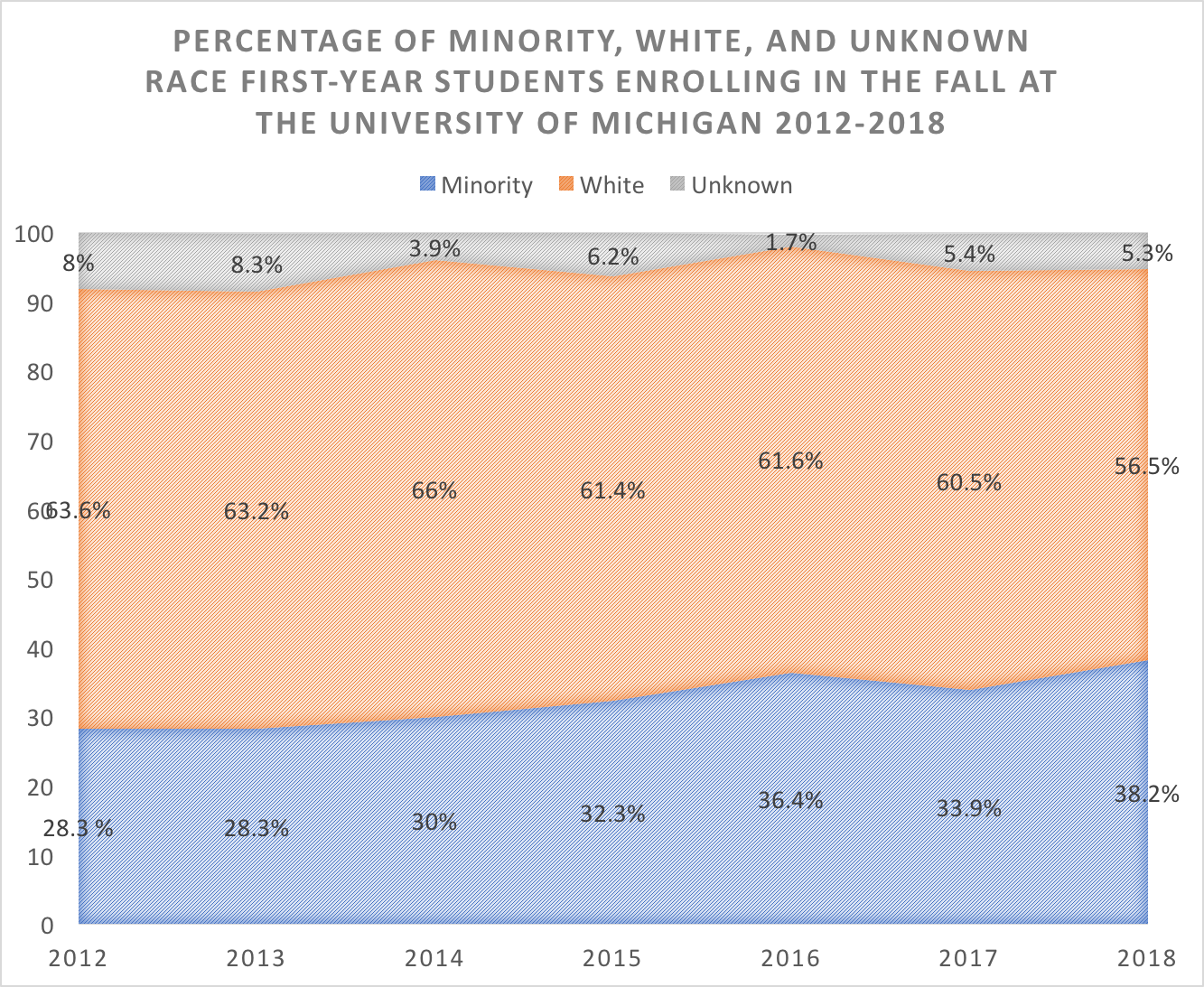
This chart displays the demographics of the freshman class at the University of Michigan over the past five years. Minority students have increased their percentage of the student body by 35 percent over the past five years. (Daily Caller)
Diversity initiatives have a visible presence on college campuses. The University of Michigan once constructed a temporary memorial in honor of minority students missing from the University because of the Michigan law forbidding affirmative action, U of M students told the Daily Caller. The memorial consisted of 950 empty maize and blue chairs on Michigan’s Diag representing the absence of the minority students. Another University of Michigan student, senior Cameron Keuning, said the subject of diversity is discussed all around campus. Keuning said he receives frequent emails regarding diversity, diversity has been discussed in the majority of his classes, and signs promoting diversity are all around campus.
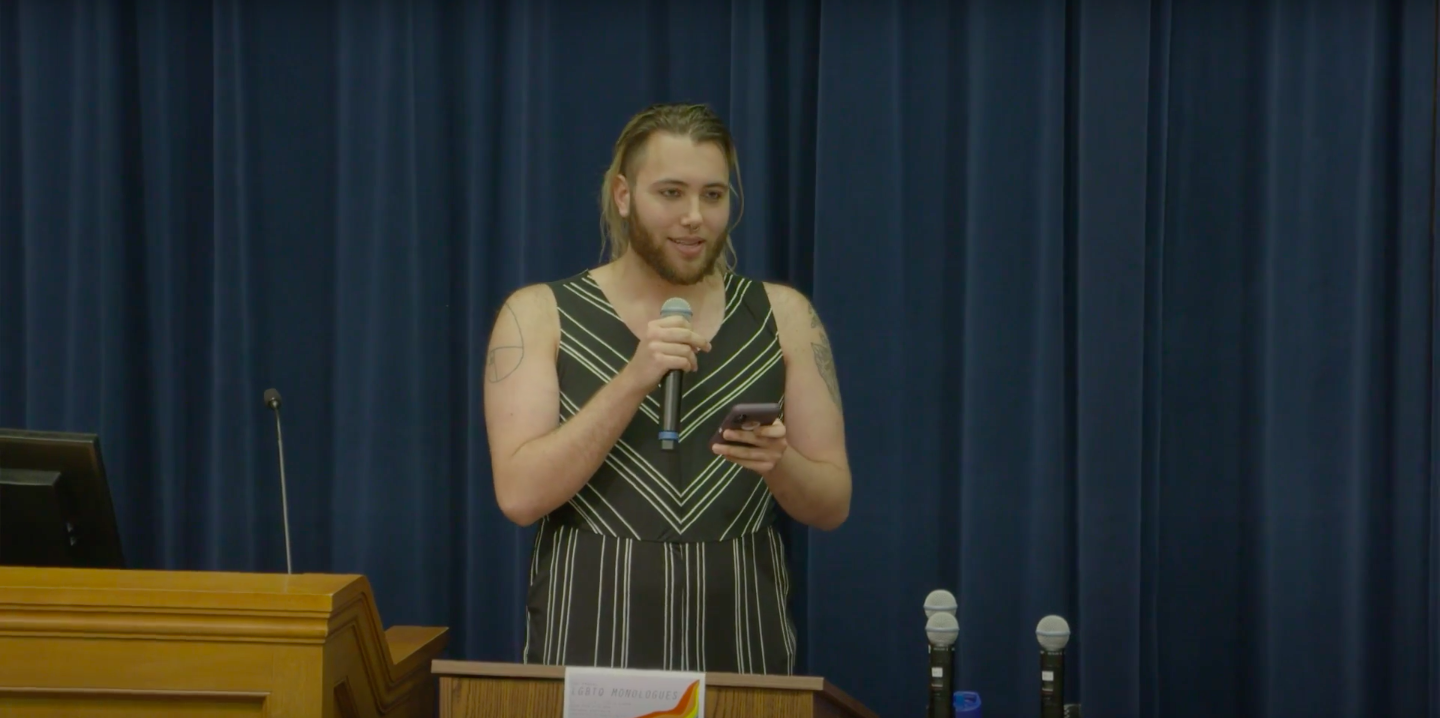
Alex Kime, student at the University of Michigan, delivers a performance as part of the LGBTQ Monologues at the 2018 Diversity, Equity & Inclusion Summit at the University of Michigan. (Youtube/University of Michigan)
Another goal of diversity offices is to increase faculty diversity. A 2018 study of 462 universities by the National Bureau of Economic Research found the hiring of a chief diversity officer had no statistically significant impact on increasing faculty diversity. There was no change in the amount of minority faculty members before a chief diversity officer was hired and the amount of minority faculty members after a chief diversity officer was hired. The study, published by Steven W. Bradley, James R. Garven, Wilson W. Law, and James E. West, also found the diversity of tenured faculty hires actually fell after the arrival of a chief diversity officer. (RELATED: Science: University ‘Diversity Officers’ Aren’t Really Doing Anything But Making College More Expensive)
According to the College Pulse survey, male and female college students have vastly different opinions towards diversity efforts. Women were more than twice as likely as men to view diversity efforts as very important. Oppositely, men were three times more likely than women to view diversity efforts as not at all important.
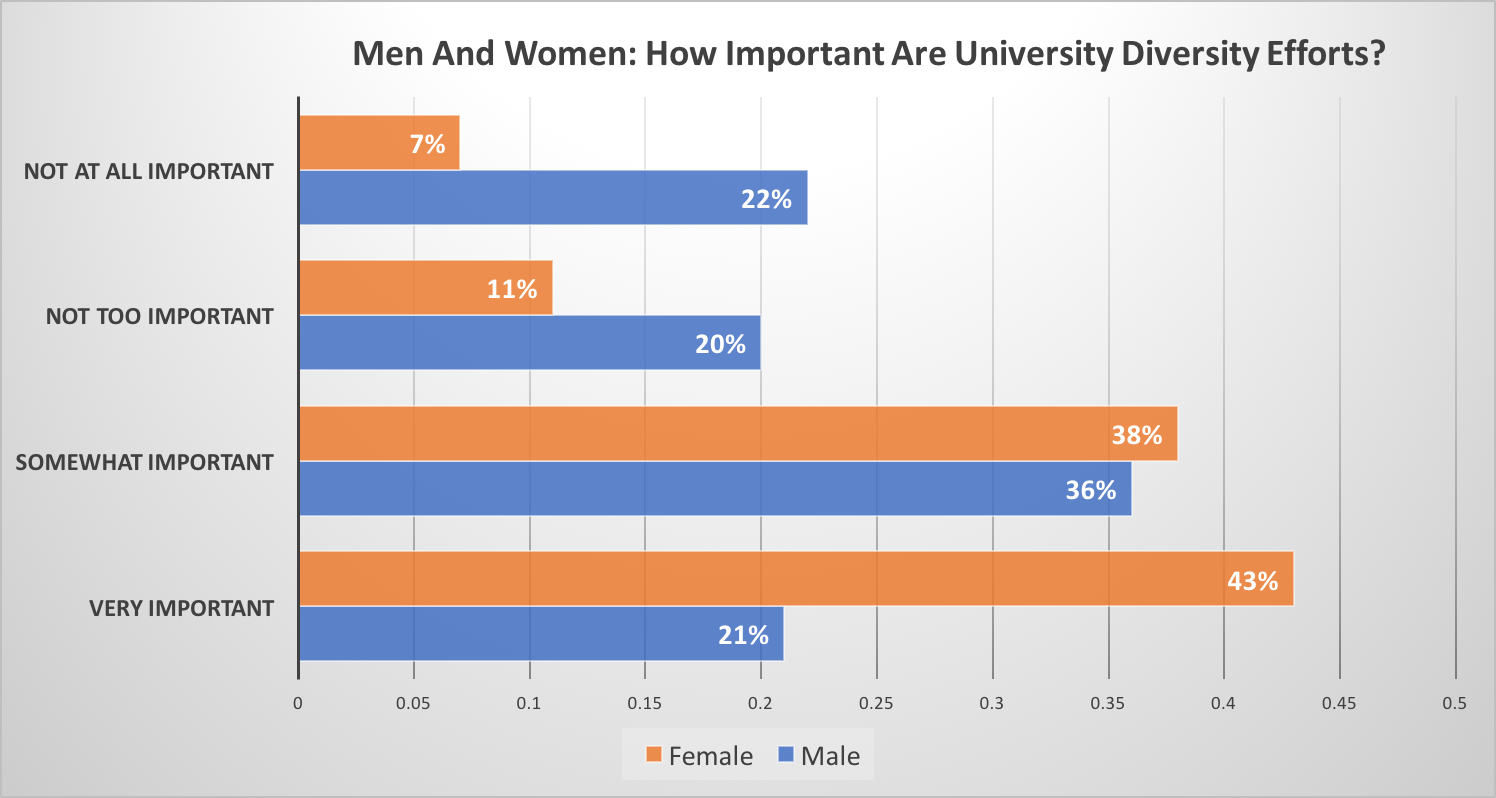
“Regardless of whether your school currently has someone in charge of diversity efforts on campus, how important is it for someone to be doing this type of work at your school?” Women (43%) were much more likely than men (21%) to say that diversity efforts are very important on a college campus. (Data by the College Pulse provided to the Daily Caller)
While the majority of college students believe diversity administrators and offices have not benefited them personally, students overall value diversity offices. 71 percent of college students said the work of diversity offices is very important or somewhat important, while only 27 percent said the work of diversity offices is not too important or not at all important.
The majority of college students (52%) are in favor of the amount their university spends on diversity initiatives. Only 23 percent of college students believe their university spends too much on diversity, and 23 percent want their college to spend more on diversity. (RELATED: Which College Major Loves Socialism The Most?)

“In general, do you think your school is spending too much money, spending too little money or spending about the right amount on eforts to promote inclusion and diversity on campus?” The majority of college students surveyed believe their university spends the right amount on diversity initiatives. (Data by the College Pulse provided to the Daily Caller)
Lawmakers in South Dakota have recently pushed back against diversity efforts at colleges in their state. Republican lawmakers, including the state House and Senate leadership, penned a letter in late June to the South Dakota Board of Regents questioning whether diversity offices promote left-wing ideology and suggesting diversity offices should be dismantled, according to the Argus Leader.
The lawmakers noted programs that benefit students of diverse cultures, particularly Native Americans, should be preserved. However, diversity offices used to promote social causes should not be preserved, according to the South Dakota Republicans. “The build-up of diversity offices which are used to promote social justice causes associated with the political left such as safe zone training, the biannual drag show, and social justice training, to name just a few, should be dismantled,” they wrote.
In the College Pulse survey, 88 percent of college students said their university was “very inclusive” or “somewhat inclusive” when it comes to race, ethnicity, sexual orientation and gender identity. 11 percent of college students disagreed and said their university was not inclusive.

College students tend to believe their university is inclusive. (Data provided by the College Pulse to the Daily Caller)
Although most college students are not aware of diversity administrators positively impacting them, most agree their college has an inclusive environment.


